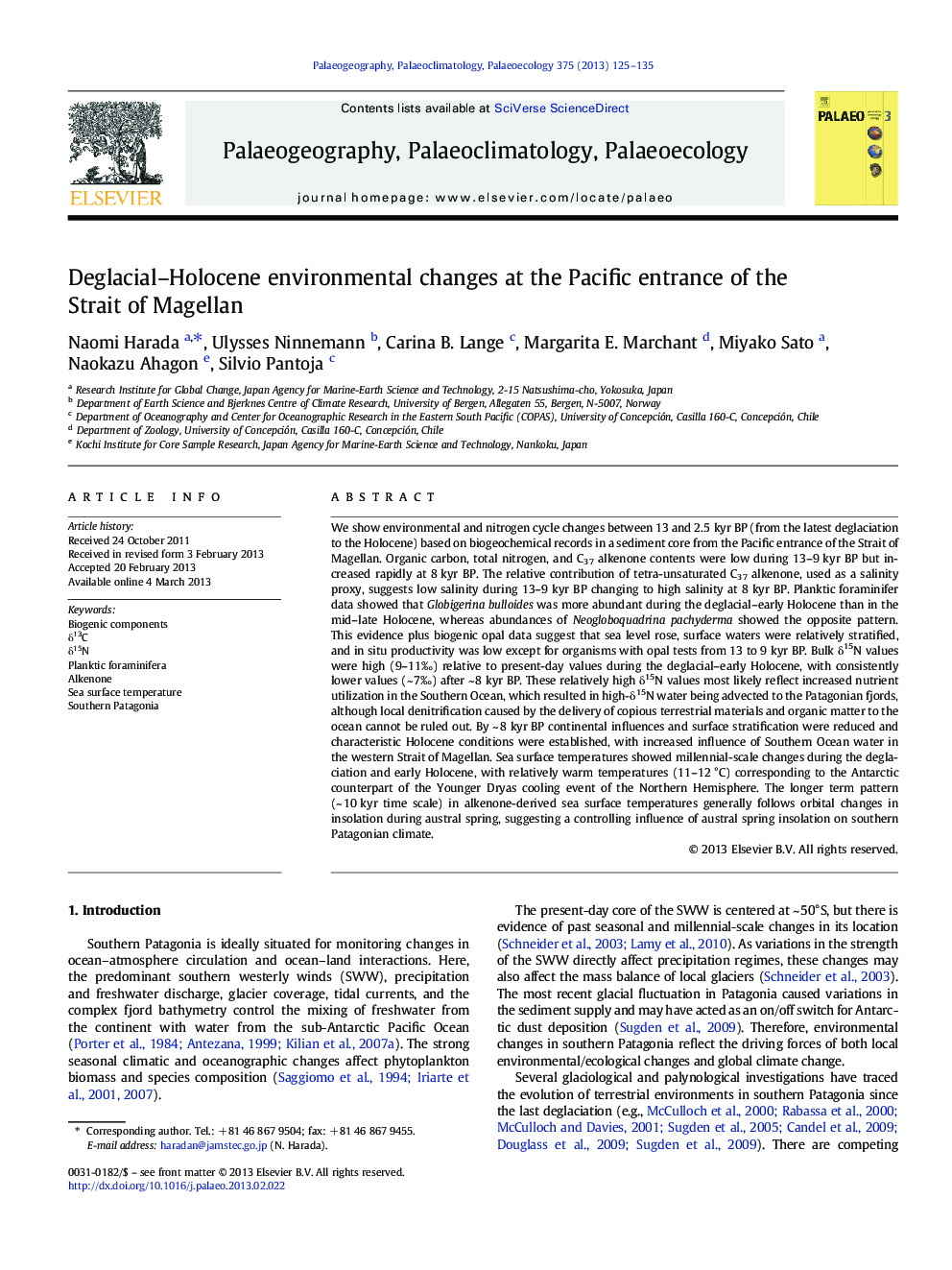| کد مقاله | کد نشریه | سال انتشار | مقاله انگلیسی | نسخه تمام متن |
|---|---|---|---|---|
| 4466660 | 1622211 | 2013 | 11 صفحه PDF | دانلود رایگان |

• Holocene oceanographic environmental data around southernmost Patagonia is scarce.
• We provide new constraints on the deglacial–Holocene climate changes in this region.
• Holocene conditions were regulated with increased influence of Southern Ocean water.
• Sea surface temperatures (SST) showed millennial-scale changes during 11–9 kyr BP.
• The longer-term pattern in SST follows changes in insolation during austral spring.
We show environmental and nitrogen cycle changes between 13 and 2.5 kyr BP (from the latest deglaciation to the Holocene) based on biogeochemical records in a sediment core from the Pacific entrance of the Strait of Magellan. Organic carbon, total nitrogen, and C37 alkenone contents were low during 13–9 kyr BP but increased rapidly at 8 kyr BP. The relative contribution of tetra-unsaturated C37 alkenone, used as a salinity proxy, suggests low salinity during 13–9 kyr BP changing to high salinity at 8 kyr BP. Planktic foraminifer data showed that Globigerina bulloides was more abundant during the deglacial–early Holocene than in the mid–late Holocene, whereas abundances of Neogloboquadrina pachyderma showed the opposite pattern. This evidence plus biogenic opal data suggest that sea level rose, surface waters were relatively stratified, and in situ productivity was low except for organisms with opal tests from 13 to 9 kyr BP. Bulk δ15N values were high (9–11‰) relative to present-day values during the deglacial–early Holocene, with consistently lower values (~ 7‰) after ~ 8 kyr BP. These relatively high δ15N values most likely reflect increased nutrient utilization in the Southern Ocean, which resulted in high-δ15N water being advected to the Patagonian fjords, although local denitrification caused by the delivery of copious terrestrial materials and organic matter to the ocean cannot be ruled out. By ~ 8 kyr BP continental influences and surface stratification were reduced and characteristic Holocene conditions were established, with increased influence of Southern Ocean water in the western Strait of Magellan. Sea surface temperatures showed millennial-scale changes during the deglaciation and early Holocene, with relatively warm temperatures (11–12 °C) corresponding to the Antarctic counterpart of the Younger Dryas cooling event of the Northern Hemisphere. The longer term pattern (~ 10 kyr time scale) in alkenone-derived sea surface temperatures generally follows orbital changes in insolation during austral spring, suggesting a controlling influence of austral spring insolation on southern Patagonian climate.
Journal: Palaeogeography, Palaeoclimatology, Palaeoecology - Volume 375, 1 April 2013, Pages 125–135